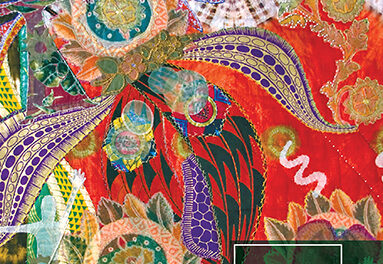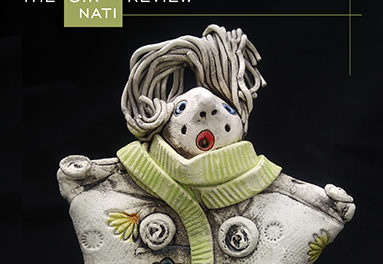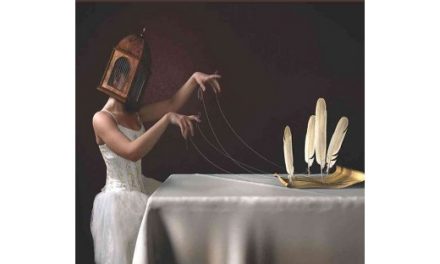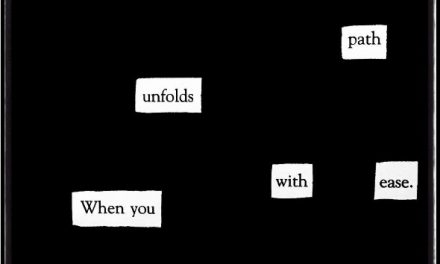 Many thanks to PhD-in-the-making Eric Bliman both for teaching The Cincinnati Review in his poetry workshop and for writing about his and his students’ mental mastication of our mag, which I will refer to (for fun) as cranial cud. To enjoy your own cud—not to mention other beneficial byproducts of journal reading—subscribe or adopt CR for your very own classroom. Contact us at editors@cincinnatireview.com for details on how to make it so.
Many thanks to PhD-in-the-making Eric Bliman both for teaching The Cincinnati Review in his poetry workshop and for writing about his and his students’ mental mastication of our mag, which I will refer to (for fun) as cranial cud. To enjoy your own cud—not to mention other beneficial byproducts of journal reading—subscribe or adopt CR for your very own classroom. Contact us at editors@cincinnatireview.com for details on how to make it so.
Translucent Sausages, Speaking Floors, and Bunny-Sluts; or, What We Learned in Workshop from Reading Journals
Eric Bliman: One of my primary tasks as a workshop teacher—maybe “guide” is a better label—is to encourage student-poets to articulate their aesthetic judgments in critical terms. In my syllabus for the undergraduate poetry workshop, I describe the verb like as “a word without character or backbone, which tells us nothing.” Liking or not liking a poem is an aesthetic judgment based on a largely uncodified set of criteria that every reader brings with him or her, like a camel’s hump. We carry it with us, whether or not we know it’s there, or what its purpose is.
For the poetry workshop that I taught this past spring, I used a variety of materials to help students enlarge their understanding of what contemporary poetry can hold, and to help them define their own set of aesthetic criteria. In addition to using a prose reader, several handouts on critical terminology, and an anthology of contemporary poems, I decided to take my friend Adam Vines’s half-joking Facebook suggestion to use the journal he edits as supplementary reading. I never had a workshop teacher use journals in a class, and I wasn’t entirely sure how I would do so, but the idea appealed to me. I ended up choosing two journals that included a hefty number of poems as well as book reviews, and that did not add much to the cost of the materials for the class: Birmingham Poetry Review (No. 38), edited by Vines, and the Cincinnati Review (issues 6.1 and 7.1), whose managing editor is Nicola Mason. Both editors were kind enough to supply copies for students at a deep discount.
In week three, each student wrote his/her first poem for the workshop and prepared a brief, informal presentation based on one poet published in a given journal. As a follow-up assignment, in week seven, students wrote a reflection that addressed: what they learned about their journal, two poets it contained, trends in contemporary poetry that the journal embodied, what they learned as poets from reading it, as well as any challenges and pleasures that the readings presented.
Student-poets who wrote about CR characterized it as eclectic, conversational, metaphor-rich, experience-driven, and “life-shaping.” One student noted that Kelly Davio’s poem “No Good Thing” “personifies ‘dark’ as a being that moves throughout the world,” and that the poet’s use of “extreme metaphors” contrasts with classical poets like Shakespeare. Another student compared three poets’ use of metaphors that he, too, called “extreme”: “Michael McFee describes hot tub jets as ‘underwater geysers,’ Susan Davis describes an earthworm as a ‘translucent sausage,’ and Bryan Narendorf [characterizes] a particular bird’s eye as ‘a charcoal smudge.’” This student comments on the conversational tone of voice embodied by phrases like “I mean” which appears in Mark Kraushaar’s “1-900-CHAT,” and “Ain’t nothin’ wrong with double negatives,” which comes from Marcus Jackson’s “Speech Therapy.” Such moves make the poems seem like part “of a conversation or thought process,” he continues, stressing that the colloquial diction “allows the poet to develop the speaker without directly describing him”—a discovery that he put to use when writing poems for workshop.
One of several student-poets who had written rhymed, Hallmarkian poetry before this class (by her own admission) revealed that “The Cincinnati Review is partially responsible for my escaping the tendency to rhyme compulsively and for expanding my subject matter.” This student writes that, by paying attention to titles, such as Saara Myrene Raappana’s “The Hardwood Laments Its Lowly Position,” she realized that “a subject as unique as a floor expressing its thoughts could be viable,” which opened her eyes to the “variety of creative opportunities contemporary poetry can provide.”
Students who reviewed BPR used the terms relatable, thrilling, mysterious, informal, and haunting to describe its poems. One student noted how Sidney Wade “uses very down-to-earth language” and “writes her poems like she is sitting in front of what she is writing about and watching it happen,” a testament to her sense of pacing and her deft handling of imagery. Another student characterized Charles Harper Webb’s poems as highly descriptive, easy to relate to, and “very colloquial.” Indeed, if we may characterize a poet’s voice as sounding “spoken,” this is an attribute that the majority of poets in CR and BPR have in common. Lesley Jenike’s line “sluts or bunnies, or bunny-sluts” (from “Repurposing Old Buildings Is No Laughing Matter”) inspired one undergrad to write: “There is irony in this poem. . . . A bunny is a soft, angelic, gentle creature, whereas a slut . . . is anything but gentle and angelic.” It’s hard to argue with that.
What was particularly nice about using BPR and CR in the workshop was that both journals publish a fairly large number of poets with two or more poems in each issue; this doubling-up or tripling-up allows each student to speak of a poet’s tendencies, obsessions, common tropes and subjects, as well as the poems’ speakers, tones of voice, use of particular words, and poetic devices. By noting commonalities and differences in form and content, students broaden their (and our) understanding of the poems when they speak or write about them as a group.
In a lot of ways, using contemporary journals in a workshop makes more sense than relying on an anthology editor’s sense of what poems are canonical, a word with troublingly elitist associations. If magazines imply a canon by virtue of publishing certain poets and not others, it is a canon that is wiped clean (or mostly) and rewritten (or mostly) with every issue, roughly like a palimpsest or a whiteboard. This is not to say anthologies shouldn’t be used, but I do think that using them as the foundation for a workshop places the reading list of poems on a pedestal that nearly all student-poets in it will be unable to scale. Journals feel more approachable; they lend themselves to discussions of error, not merely of excellence, in ways that anthologies generally do not; perhaps more important, my students spoke of how they could envision their own work appearing beside certain poets for whom they developed an affinity. For a long time, I wanted to teach a contemporary poetry workshop that was contemporary in the literal sense—and not in the sense of “recent” or “recently departed” poets—and these journals allowed me to do that. I would definitely use them again.










